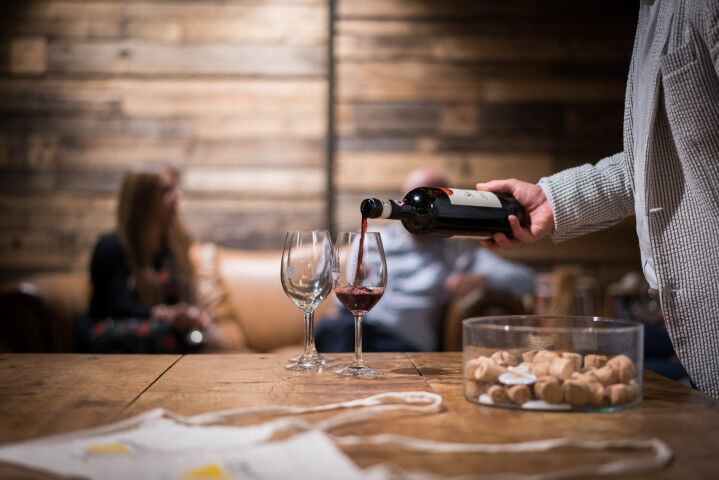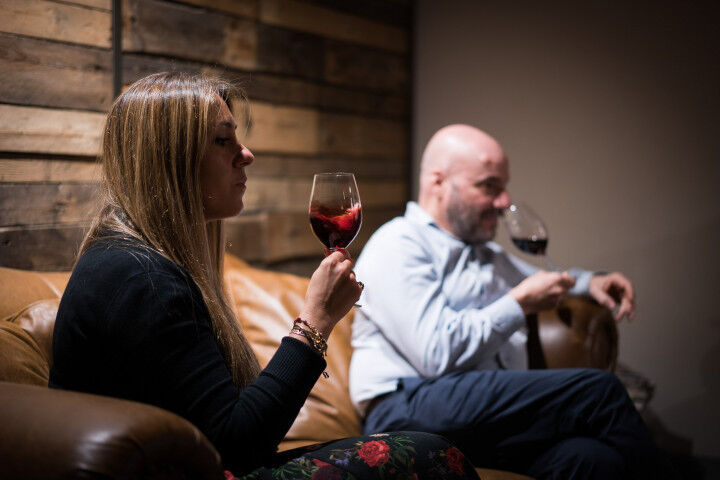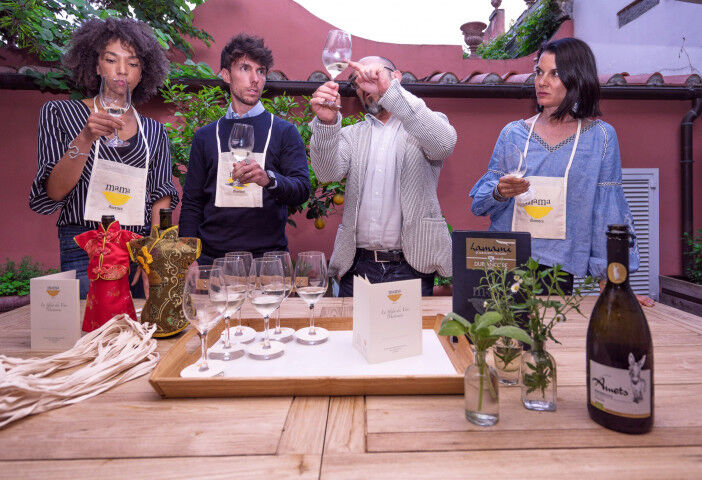
Learn How to Taste Wine and Develop Your Palate
The magic of wine lies in the fact that it is enjoyable at various levels. We all enjoy a glass of easy-drinking wine with friends for an aperitivo or a bottle kept from “that” special occasion.
Or we can take this emotion, this passion a step further, by learning how to properly observe, smell and taste the wines we drink.

What Is Wine Tasting?
Sensory or organoleptic characteristics, or sensations, are not internal properties of an object but the product of the interaction between the object and man.
Tasting wine means enhancing creative connections between our senses, our active memory and creating an appropriate language to narrate the glass in front of us. It allows us to evaluate not only according to personal preferences, but to a more “neutral” approach, in which sight, nose and taste become fundamental.
Why do we need to taste wine?
Brilliance, color, legs, intensity, persistence, all elements which lead us to a profounder comprehension of “gods’ nectar” and a step closer to divining grape varieties, wine-growing area and wine-making techniques.
Wine tasting is not only for Somms…it involves all those who are seeking more depth in their glass of wine.

What are the main stages of a traditional wine tasting?
The 3 basic senses involved in wine tasting are: sight, smell, and taste, which are implicated in the above-mentioned order. They will provide fundamental information on appearance, aromas and palate. Then, within these fundamentals, dozens and dozens of different and complementary information can be found concerning the tasted wine.
How do you prepare for a wine tasting?
Before tasting, make sure that your glass is odorless and your palate clean, free of any aggressive tastes (such as toothpaste or certain foods).
The type of glass can enhance certain characteristics of a wine, such as brilliance, bubbles, or the broadness of aromas, but is not fundamental in initial stages of winetasting. More important is to hold the glass properly at the base of its stem.
Last but not least, before tasting wine, make sure you drink some water, as dehydration makes your nose receptors dry and unsensitive to aromas.
What are the main features of wine tasting?

How to Evaluate Wine Based on Appearance?
When looking at our glass of wine and evaluating its aspects, it’s our reptile brain which takes over the judgment. This phase is characterized by instinctive decision-making as our brain is trying to find out whether the proposed liquid is harmless or not. As matter of fact, this is where blind tastings come in handy. They “trick” our brains, by eliminating the visual judgement and often leaving us flabbergasted (It’s not that easy to distinguish a white wine from a red without looking at the color!)
How do you judge the quality of a wine?
Take closer look at your wine. In case of bubbles, evaluate their number and dimension. Evaluate the brightness of the wine, does it shine? This is typical of youthful wines grown in cooler climates. Young whites will have a lighter yellow, straw color which gets darker with ageing, whereas red wines will lose color points and add an orange/brownish hue after barrel and long bottle ageing.
Swirl your glass and the wine will form legs along the surface of the glass, this indicates the degree of alcohol whereas the speed of the swirling wine indicates the sweetness -slow-turning wines have a higher sugar content.

How to Evaluate Wine Based on Aroma?
The aromas of a wine are perceived through the molecules contained in the liquid which are released into the air and are received by the olfactory receptors in our nose which send impulses to the brain which are then translated into information and thoughts. This seems easy but it involves 2 of our 3 brains: our ancestral limbic system which receives the impulse and our prefrontal cortex which calls the aroma by its name. This connection between smelling and recognizing the aroma takes time and gymnastics. The more you exercise, the faster and better your connections will get.
Where do aromas in wine come from?
Aromas of wine come from 3 basic elements: grape variety, fermentation, and ageing.
So take your glass to your nose and take a deep smell, this tells you about intensity and alcohol. Then swirl the wine to oxygen it and release the aroma molecules. You will start detecting the primary aromas from grape variety and fermentation. Fruit, flowers, yeast, nuts, and after a while in the glass all tertiary such as oak, vanilla, chocolate, leather, typical of the aging process.
Aged wines evolve in the glass, so keep some side and detect further aromas in the wine after ten to twenty minutes.
Keep in mind that this phase is also fundamental in detecting eventual defects in wine, such as cork or Brett.

How to Evaluate Wine Based on Taste?
Our mouth can individuate 5 different tasting aspects on each part of the tongue: sweet, sour, saltiness, bitterness, and umami.
Take a first small sip, this will prepare your palate. Now let the wine run by the sides of your tongue while breathing. This will allow oxygen to unveil the various aspects.
What are the taste sensations of wine?
Now, the evaluation of each of the tasting aspects of a wine makes no sense but only in the balance that we find in our mouth, achieved between the soft sensations and the hard sensations of a wine. Soft sensations are sugar and alcohol counterbalanced by acidity, tannins and minerality.
If your salivation increases, this is due to acidity. A certain bitterness and dry sensation on your gums, is caused by tannins but can also be unbalanced alcohol. Try to distinguish various elements but evaluate if their sum is pleasant on the palate. A wine is “good” when balanced.
Don’t forget that serving temperature can disguise or exalt certain elements (warm Coke tastes much sweeter than its cooled version)
Now it’s time to give a name to the tasting sensations: peach, plum, jam, coffee, flint, etc. If you need to taste several wines, it’s best to spit instead of swallowing the wine so that alcohol does not affect your evaluations.
Finally, notice how long the sensations last in your mouth, this “count” in second is called persistence and is an element of quality for a wine.

Here Are Some Suggestions on How to Evaluate Wine
A notebook or an app will help you remember your tasting notes and keep track of what you’ve drunk over time.
And keep in mind the golden rule: the more you taste, the better you become at it!
Ps. Many of the above-mentioned characteristics are not consistent when tasting “natural” wines, thus wines with alternative wine and ageing processes, such as for example orange wines. In this case, the indications about color and nose follow “other rules”.

all.sign in to leave a review






